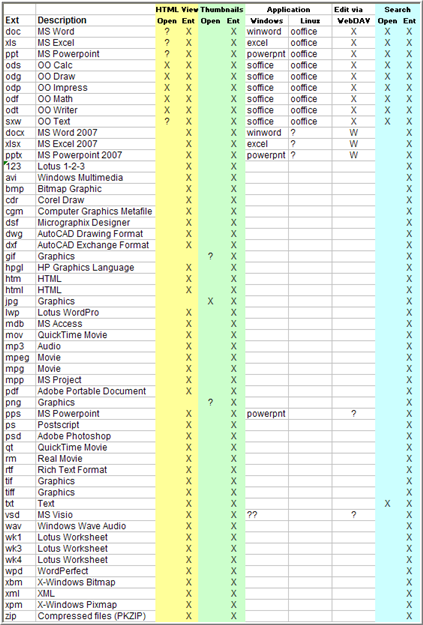2.10 Document Support
2.10.1 Uploaded Files
When a file is uploaded into Novell Teaming, it is processed in a number of ways:
-
Textual content is extracted and sent to the search engine. For some file types (such as word processing documents) the textual content is obvious. For others, such as graphics files, there might be little or no textual content beyond basic metadata.
-
If possible, a thumbnail and a scaled image somewhat larger than a thumbnail of the file are created. The thumbnail of a multi-page document shows the first page.
-
If possible, a browser-only (HTML) version of the file is created. This allows people who do not have the ability to open the file with its native application to get an idea of what is in the file. The rendering is on a “best effort” basis and the level of detail and fidelity of the rendering varies greatly.
A licensed technology from the Stellent* company (now part of Oracle) provides processing capabilities to a wide spectrum of file types (over 200).
2.10.2 Editing Support
There are two ways of editing files stored in Novell Teaming:
-
Download the file to your desktop, edit the file, and upload the file to the entry (as an attachment).
A new version of the attachment is created reflecting your changes. It is possible to manually lock the entry if you want to prevent other people from modifying any of the attached files.
-
Certain file types provide an button, which allows for “edit in place” functionality. When it is available, clicking on the button launches a small Java applet, which launches the associated edit program for the file. The program accesses the file stored in Novell Teaming through WebDAV and is subject to the individual file locking protocols that WebDAV provides. Saving the file (or exiting the application) creates a new version of the attachment. No interaction with the browser is needed.
Because the edit in place option requires WebDAV URL support, which is not universally supported by the operating systems, you need to configure Novell Teaming to know which applications are WebDAV-aware.
The following illustration shows the default configuration of file and document support in Novell Teaming.
Figure 2-2 Document and File Support
